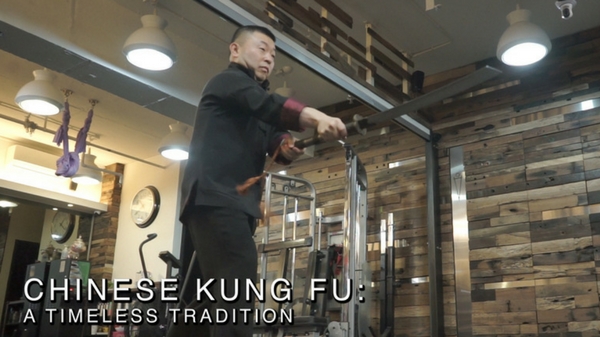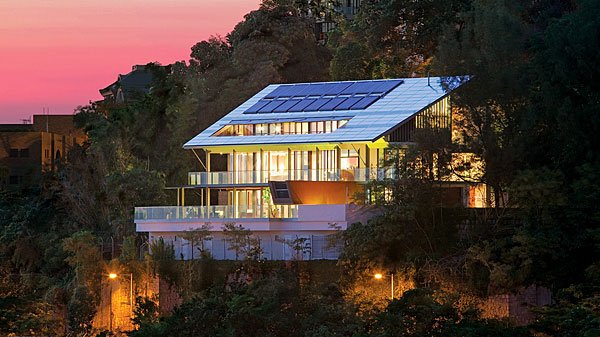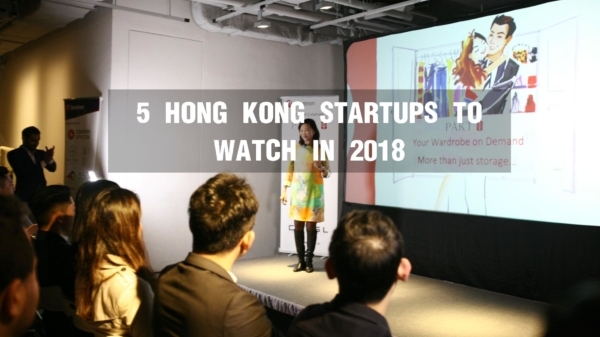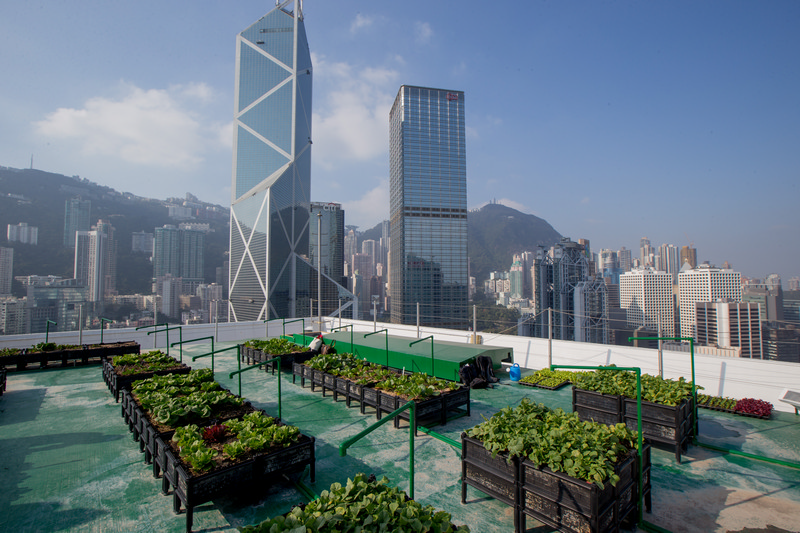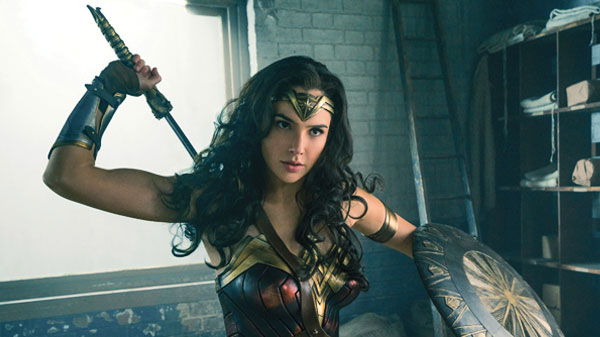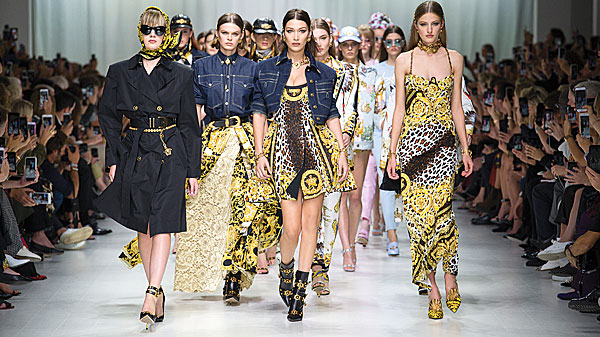
Much like Mother Nature blooming after a long winter, this season’s collections herald the emergence of spring with a sharp burst of colours. Bold prints, geometric patterns and sheer materials dominated the catwalks in celebration of the vernal equinox. SS18 also saw vintage fashion fads like high-waisted trousers, tweed designs and the quintessential ladies’ suit reinterpreted for the modern woman. Without further adieu, let’s dive into the fashionable looks of the warmer months ahead…
BOTTEGA VENETA
[{"id" : "33422","image" : "https://www.gafencushop.com/wp-content/gallery/bottega_ss18_final/466x700-BottegaVeneta1_opt.jpg","caption" : "466x700-BottegaVeneta1_opt"},{"id" : "33425","image" : "https://www.gafencushop.com/wp-content/gallery/bottega_ss18_final/466x700-BottegaVeneta2_opt.jpg","caption" : "466x700-BottegaVeneta2_opt"},{"id" : "33427","image" : "https://www.gafencushop.com/wp-content/gallery/bottega_ss18_final/466x700-BottegaVeneta3_opt.jpg","caption" : "466x700-BottegaVeneta3_opt"},{"id" : "33429","image" : "https://www.gafencushop.com/wp-content/gallery/bottega_ss18_final/466x700-BottegaVeneta4_opt.jpg","caption" : "466x700-BottegaVeneta4_opt"},{"id" : "33431","image" : "https://www.gafencushop.com/wp-content/gallery/bottega_ss18_final/466x700-BottegaVeneta5_opt.jpg","caption" : "466x700-BottegaVeneta5_opt"},{"id" : "33433","image" : "https://www.gafencushop.com/wp-content/gallery/bottega_ss18_final/466x700-BottegaVeneta6_opt.jpg","caption" : "466x700-BottegaVeneta6_opt"},{"id" : "33435","image" : "https://www.gafencushop.com/wp-content/gallery/bottega_ss18_final/466x700-BottegaVeneta7_opt.jpg","caption" : "466x700-BottegaVeneta7_opt"},{"id" : "33437","image" : "https://www.gafencushop.com/wp-content/gallery/bottega_ss18_final/466x700-BottegaVeneta8_opt.jpg","caption" : "466x700-BottegaVeneta8_opt"},{"id" : "33439","image" : "https://www.gafencushop.com/wp-content/gallery/bottega_ss18_final/466x700-BottegaVeneta9_opt.jpg","caption" : "466x700-BottegaVeneta9_opt"},{"id" : "33441","image" : "https://www.gafencushop.com/wp-content/gallery/bottega_ss18_final/466x700-BottegaVeneta10_opt.jpg","caption" : "466x700-BottegaVeneta10_opt"},{"id" : "33443","image" : "https://www.gafencushop.com/wp-content/gallery/bottega_ss18_final/466x700-BottegaVeneta11_opt.jpg","caption" : "466x700-BottegaVeneta11_opt"}]
To offset the world’s gloomy political and economic landscape, designer Tomas Maier has sprinkled Bottega Veneta’s Spring/Summer collection with a plethora of bold colours and whimsical embellishments. For women, the focus was on clean, flowing silhouettes dressed up with ‘20s-era flapper tassels and hand-stitched metal studs, gemstones and mirror work. The same trends were evident, though less prominently, among the menswear items, which featured a more muted palette complemented by leather belts and boxy jackets. The brand also debuted its new ‘personalisable’ handbags on the catwalk, with models of both gender carrying monogrammed totes and weekenders.
CHANEL
[{"id" : "33159","image" : "https://www.gafencushop.com/wp-content/gallery/chanel_ss18_opt/Chanel_1.jpg","caption" : "Chanel_1"},{"id" : "33162","image" : "https://www.gafencushop.com/wp-content/gallery/chanel_ss18_opt/Chanel_2.jpg","caption" : "Chanel_2"},{"id" : "33164","image" : "https://www.gafencushop.com/wp-content/gallery/chanel_ss18_opt/Chanel_3.jpg","caption" : "Chanel_3"},{"id" : "33166","image" : "https://www.gafencushop.com/wp-content/gallery/chanel_ss18_opt/Chanel_4.jpg","caption" : "Chanel_4"},{"id" : "33168","image" : "https://www.gafencushop.com/wp-content/gallery/chanel_ss18_opt/Chanel_5.jpg","caption" : "Chanel_5"},{"id" : "33170","image" : "https://www.gafencushop.com/wp-content/gallery/chanel_ss18_opt/Chanel_6.jpg","caption" : "Chanel_6"},{"id" : "33172","image" : "https://www.gafencushop.com/wp-content/gallery/chanel_ss18_opt/Chanel_7.jpg","caption" : "Chanel_7"},{"id" : "33174","image" : "https://www.gafencushop.com/wp-content/gallery/chanel_ss18_opt/Chanel_8.jpg","caption" : "Chanel_8"},{"id" : "33176","image" : "https://www.gafencushop.com/wp-content/gallery/chanel_ss18_opt/Chanel_9.jpg","caption" : "Chanel_9"},{"id" : "33178","image" : "https://www.gafencushop.com/wp-content/gallery/chanel_ss18_opt/Chanel_010.jpg","caption" : "Chanel_010"}]
When asked about this latest collection, Karl Lagerfeld responded with typical aplomb: “It’s up to you what you see, whatever you see. I don’t make philosophical notes on it.” Don’t be fooled by the nonchalant response. His new Chanel line is a dazzling display of water-themed tones and textures. Vintage-inspired denim designs and tweed patterns have all been given a ‘Space Age’ plastic treatment – from knee-high boots and gloves to hats and overcoats, and even a plastic-encased handbag. All-in-all, Lagerfeld has proven that haute couture always looks chic – even on a rainy day.
DIOR
[{"id" : "33382","image" : "https://www.gafencushop.com/wp-content/gallery/dior_ss18_opt/Dior_4opt.jpg","caption" : "Dior_4opt"},{"id" : "33385","image" : "https://www.gafencushop.com/wp-content/gallery/dior_ss18_opt/Dior_5opt.jpg","caption" : "Dior_5opt"},{"id" : "33387","image" : "https://www.gafencushop.com/wp-content/gallery/dior_ss18_opt/Dior_6opt.jpg","caption" : "Dior_6opt"},{"id" : "33389","image" : "https://www.gafencushop.com/wp-content/gallery/dior_ss18_opt/Dior_7opt.jpg","caption" : "Dior_7opt"},{"id" : "33391","image" : "https://www.gafencushop.com/wp-content/gallery/dior_ss18_opt/Dior_8opt.jpg","caption" : "Dior_8opt"},{"id" : "33393","image" : "https://www.gafencushop.com/wp-content/gallery/dior_ss18_opt/Dior_9opt.jpg","caption" : "Dior_9opt"}]
One major theme underlines the diverse offerings that make up Dior’s Spring/Summer 2018 collection: female empowerment. It purposefully caters to every aspect of a woman’s personality, from flirtatiously sheer skirts and casually chic high-waisted denim trousers to no-nonsense dress overalls and daringly bold patterns. Designer Maria Grazia Chiuri has also tossed out the sky-high stilettos so commonly found in haute couture. In their place are comfortable Mary Janes and block-heeled boots that are equally at home on runways as on high streets. Even the handbags are a perfect blend of fashionable chic and everyday utilitarianism. Bravo!
DOLCE & GABBANA
[{"id" : "33119","image" : "https://www.gafencushop.com/wp-content/gallery/dolce_gabbana_ss18v2/Dolce-Gabbana_1.jpg","caption" : "Dolce-&-Gabbana_1"},{"id" : "33122","image" : "https://www.gafencushop.com/wp-content/gallery/dolce_gabbana_ss18v2/Dolce-Gabbana_2.jpg","caption" : "Dolce-&-Gabbana_2"},{"id" : "33124","image" : "https://www.gafencushop.com/wp-content/gallery/dolce_gabbana_ss18v2/Dolce-Gabbana_3.jpg","caption" : "Dolce-&-Gabbana_3"},{"id" : "33126","image" : "https://www.gafencushop.com/wp-content/gallery/dolce_gabbana_ss18v2/Dolce-Gabbana_4.jpg","caption" : "Dolce-&-Gabbana_4"},{"id" : "33128","image" : "https://www.gafencushop.com/wp-content/gallery/dolce_gabbana_ss18v2/Dolce-Gabbana_5.jpg","caption" : "Dolce-&-Gabbana_5"},{"id" : "33130","image" : "https://www.gafencushop.com/wp-content/gallery/dolce_gabbana_ss18v2/Dolce-Gabbana_6.jpg","caption" : "Dolce-&-Gabbana_6"},{"id" : "33132","image" : "https://www.gafencushop.com/wp-content/gallery/dolce_gabbana_ss18v2/Dolce-Gabbana_7.jpg","caption" : "Dolce-&-Gabbana_7"},{"id" : "33134","image" : "https://www.gafencushop.com/wp-content/gallery/dolce_gabbana_ss18v2/Dolce-Gabbana_8.jpg","caption" : "Dolce-&-Gabbana_8"},{"id" : "33136","image" : "https://www.gafencushop.com/wp-content/gallery/dolce_gabbana_ss18v2/Dolce-Gabbana_9.jpg","caption" : "Dolce-&-Gabbana_9"},{"id" : "33138","image" : "https://www.gafencushop.com/wp-content/gallery/dolce_gabbana_ss18v2/Dolce-Gabbana_010.jpg","caption" : "Dolce-&-Gabbana_010"}]
Love is in the air, and nowhere was that more apparent than in Dolce & Gabbana’s Spring/Summer collection. The new line pays homage to feminine ardor by drawing inspiration from the Queen of Hearts herself. Indeed, face-card designs are dominant throughout. Models strutted down the catwalk wearing tiaras and showing off heart-trimmed sequin dresses, heart-motif shoes and handbags embossed with the queen’s own face. D&G’s signature grandiose style made its presence felt in bold prints, shimmering threads and gemstone embellishments. The showstopper of this funky collection is a sleek floor-length gown adorned entirely with a sequined Queen of Hearts.
FENDI
[{"id" : "33181","image" : "https://www.gafencushop.com/wp-content/gallery/fendi_ss18_opt/Fendi_1.jpg","caption" : "Fendi_1"},{"id" : "33184","image" : "https://www.gafencushop.com/wp-content/gallery/fendi_ss18_opt/Fendi_2.jpg","caption" : "Fendi_2"},{"id" : "33186","image" : "https://www.gafencushop.com/wp-content/gallery/fendi_ss18_opt/Fendi_3.jpg","caption" : "Fendi_3"},{"id" : "33188","image" : "https://www.gafencushop.com/wp-content/gallery/fendi_ss18_opt/Fendi_4.jpg","caption" : "Fendi_4"},{"id" : "33190","image" : "https://www.gafencushop.com/wp-content/gallery/fendi_ss18_opt/Fendi_5.jpg","caption" : "Fendi_5"},{"id" : "33192","image" : "https://www.gafencushop.com/wp-content/gallery/fendi_ss18_opt/Fendi_6.jpg","caption" : "Fendi_6"},{"id" : "33194","image" : "https://www.gafencushop.com/wp-content/gallery/fendi_ss18_opt/Fendi_7.jpg","caption" : "Fendi_7"},{"id" : "33196","image" : "https://www.gafencushop.com/wp-content/gallery/fendi_ss18_opt/Fendi_8.jpg","caption" : "Fendi_8"},{"id" : "33198","image" : "https://www.gafencushop.com/wp-content/gallery/fendi_ss18_opt/Fendi_9.jpg","caption" : "Fendi_9"},{"id" : "33200","image" : "https://www.gafencushop.com/wp-content/gallery/fendi_ss18_opt/Fendi_010.jpg","caption" : "Fendi_010"}]
Off-shoulder designs and bold monochrome pieces interspersed with a delightful interplay of geometric patterns were the hallmarks of Fendi’s Spring/Summer collection this year. Karl Lagerfeld’s nautical blues from SS17 were referenced – albeit in a more refined manner – in a white-striped blue dress suit with a plunging neckline, and the decidedly summery sheer chemises. Beautiful off-shoulder trench coats and unassumingly elegant handbags showcased the brand’s renowned leatherwork. Despite the overarching springtime feel, Fendi holds on to the last remnants of winter with its lush fur bomber jacket embellished entirely in the brand’s logo.
GIORGIO ARMANI
[{"id" : "33203","image" : "https://www.gafencushop.com/wp-content/gallery/georgio_armani_ss18_opt/Giorgio-Armani_1.jpg","caption" : "Giorgio-Armani_1"},{"id" : "33206","image" : "https://www.gafencushop.com/wp-content/gallery/georgio_armani_ss18_opt/Giorgio-Armani_2.jpg","caption" : "Giorgio-Armani_2"},{"id" : "33208","image" : "https://www.gafencushop.com/wp-content/gallery/georgio_armani_ss18_opt/Giorgio-Armani_3.jpg","caption" : "Giorgio-Armani_3"},{"id" : "33210","image" : "https://www.gafencushop.com/wp-content/gallery/georgio_armani_ss18_opt/Giorgio-Armani_4.jpg","caption" : "Giorgio-Armani_4"},{"id" : "33212","image" : "https://www.gafencushop.com/wp-content/gallery/georgio_armani_ss18_opt/Giorgio-Armani_5.jpg","caption" : "Giorgio-Armani_5"},{"id" : "33214","image" : "https://www.gafencushop.com/wp-content/gallery/georgio_armani_ss18_opt/Giorgio-Armani_6.jpg","caption" : "Giorgio-Armani_6"},{"id" : "33216","image" : "https://www.gafencushop.com/wp-content/gallery/georgio_armani_ss18_opt/Giorgio-Armani_7.jpg","caption" : "Giorgio-Armani_7"},{"id" : "33218","image" : "https://www.gafencushop.com/wp-content/gallery/georgio_armani_ss18_opt/Giorgio-Armani_8.jpg","caption" : "Giorgio-Armani_8"},{"id" : "33220","image" : "https://www.gafencushop.com/wp-content/gallery/georgio_armani_ss18_opt/Giorgio-Armani_9.jpg","caption" : "Giorgio-Armani_9"},{"id" : "33222","image" : "https://www.gafencushop.com/wp-content/gallery/georgio_armani_ss18_opt/Giorgio-Armani_010.jpg","caption" : "Giorgio-Armani_010"}]
Giorgio Armani’s latest collection perfectly encapsulates the joyful and gentle spirit of spring. His long-term love affair with strongly defined lines has, in this instance, been tempered with a delicate pastel palette and flowing silhouettes. An element of fun has been injected here too, in the form of bold chunky jewellery and pop art prints. Meanwhile, the fashionable shorts, wide-brimmed black sunhat and white-on-orange beach bag seem to signify a longing for the arrival of a tropical summer.
GUCCI
[{"id" : "33225","image" : "https://www.gafencushop.com/wp-content/gallery/gucci_ss18_opt/Gucci_1.jpg","caption" : "Gucci_1"},{"id" : "33228","image" : "https://www.gafencushop.com/wp-content/gallery/gucci_ss18_opt/Gucci_2.jpg","caption" : "Gucci_2"},{"id" : "33230","image" : "https://www.gafencushop.com/wp-content/gallery/gucci_ss18_opt/Gucci_3.jpg","caption" : "Gucci_3"},{"id" : "33232","image" : "https://www.gafencushop.com/wp-content/gallery/gucci_ss18_opt/Gucci_4.jpg","caption" : "Gucci_4"},{"id" : "33234","image" : "https://www.gafencushop.com/wp-content/gallery/gucci_ss18_opt/Gucci_5.jpg","caption" : "Gucci_5"},{"id" : "33236","image" : "https://www.gafencushop.com/wp-content/gallery/gucci_ss18_opt/Gucci_6.jpg","caption" : "Gucci_6"},{"id" : "33238","image" : "https://www.gafencushop.com/wp-content/gallery/gucci_ss18_opt/Gucci_7.jpg","caption" : "Gucci_7"},{"id" : "33240","image" : "https://www.gafencushop.com/wp-content/gallery/gucci_ss18_opt/Gucci_8.jpg","caption" : "Gucci_8"},{"id" : "33242","image" : "https://www.gafencushop.com/wp-content/gallery/gucci_ss18_opt/Gucci_9.jpg","caption" : "Gucci_9"},{"id" : "33244","image" : "https://www.gafencushop.com/wp-content/gallery/gucci_ss18_opt/Gucci_010.jpg","caption" : "Gucci_010"}]
This season’s Gucci transports us to a collection of contradictions where ‘80s shoulders and English tweed meet as one. Influenced by multiple motifs, the line features anything from Elton John’s ‘70s glam-rock style in a sequin detailed violet dress to a shoulder bag with Guccy printed in a font style resembling that of Sega, the entertainment and arcade game company popular in that decade. Exploring the concept that the past, present and future are synchronised, Creative Director Alessandro Michele explains that “the collection is more than beauty. It’s a state of mind. It’s an idea of community and a really deep expression”.
HERMES
[{"id" : "33362","image" : "https://www.gafencushop.com/wp-content/gallery/hermes_ss18_opt/Hermes_1opt.jpg","caption" : "Hermes_1opt"},{"id" : "33365","image" : "https://www.gafencushop.com/wp-content/gallery/hermes_ss18_opt/Hermes_2opt.jpg","caption" : "Hermes_2opt"},{"id" : "33367","image" : "https://www.gafencushop.com/wp-content/gallery/hermes_ss18_opt/Hermes_3opt.jpg","caption" : "Hermes_3opt"},{"id" : "33369","image" : "https://www.gafencushop.com/wp-content/gallery/hermes_ss18_opt/Hermes_4opt.jpg","caption" : "Hermes_4opt"},{"id" : "33371","image" : "https://www.gafencushop.com/wp-content/gallery/hermes_ss18_opt/Hermes_5opt.jpg","caption" : "Hermes_5opt"},{"id" : "33373","image" : "https://www.gafencushop.com/wp-content/gallery/hermes_ss18_opt/Hermes_6opt.jpg","caption" : "Hermes_6opt"},{"id" : "33375","image" : "https://www.gafencushop.com/wp-content/gallery/hermes_ss18_opt/Hermes_7_opt.jpg","caption" : "Hermes_7_opt"},{"id" : "33377","image" : "https://www.gafencushop.com/wp-content/gallery/hermes_ss18_opt/Hermes_8opt.jpg","caption" : "Hermes_8opt"},{"id" : "33379","image" : "https://www.gafencushop.com/wp-content/gallery/hermes_ss18_opt/Hermes_9_opt.jpg","caption" : "Hermes_9_opt"}]
French designer Nadège Vanhée-Cybulski brings spring to life with a combination of fresh and elegant styles, linear tones and graphic compositions. Displaying a gentle colour palette with well-appointed contrasts, this collection feels delicate and sophisticated. Scottish plaids set a linear tone when compared to the soft cape-style coats paired with pyjama style trousers. The star of the show was a two-piece tie-neck shirt and wrap-style trousers in Grand Manège print silk twill reworked in watercolour-effect ink. The Hermès 2002 bag in check cotton gabardine is the perfect companion to this ensemble.
LOEWE
[{"id" : "33247","image" : "https://www.gafencushop.com/wp-content/gallery/loewe_ss18_opt/Loewe_1.jpg","caption" : "Loewe_1"},{"id" : "33250","image" : "https://www.gafencushop.com/wp-content/gallery/loewe_ss18_opt/Loewe_2.jpg","caption" : "Loewe_2"},{"id" : "33252","image" : "https://www.gafencushop.com/wp-content/gallery/loewe_ss18_opt/Loewe_3.jpg","caption" : "Loewe_3"},{"id" : "33254","image" : "https://www.gafencushop.com/wp-content/gallery/loewe_ss18_opt/Loewe_4.jpg","caption" : "Loewe_4"},{"id" : "33256","image" : "https://www.gafencushop.com/wp-content/gallery/loewe_ss18_opt/Loewe_5.jpg","caption" : "Loewe_5"},{"id" : "33258","image" : "https://www.gafencushop.com/wp-content/gallery/loewe_ss18_opt/Loewe_6.jpg","caption" : "Loewe_6"},{"id" : "33260","image" : "https://www.gafencushop.com/wp-content/gallery/loewe_ss18_opt/Loewe_7.jpg","caption" : "Loewe_7"},{"id" : "33262","image" : "https://www.gafencushop.com/wp-content/gallery/loewe_ss18_opt/Loewe_8.jpg","caption" : "Loewe_8"},{"id" : "33264","image" : "https://www.gafencushop.com/wp-content/gallery/loewe_ss18_opt/Loewe_9.jpg","caption" : "Loewe_9"},{"id" : "33266","image" : "https://www.gafencushop.com/wp-content/gallery/loewe_ss18_opt/Loewe_010.jpg","caption" : "Loewe_010"}]
Loewe struts onto the runway clearly aiming to communicate all things feminine. Showcasing Liberty prints from London, paisleys from India and traditional hand-woven fabrics from South America, it’s clear that Loewe’s character is that of a worldly traveller; one whom every woman in the audience wished to be. In addition to textures, Jonathan Anderson used unconventional methods to create movement. Notable pieces include a half shredded trench coat, complete with strands crimpled into twirls and a fringed Spanish shawl transformed into an abstract dress. The new edition Tent bag in Oro or Caramel completes the look.
LOUS VUITTON
[{"id" : "33400","image" : "https://www.gafencushop.com/wp-content/gallery/louis_vuitton_ss18_opt/466x700-lv1opt.jpg","caption" : "466x700-lv1opt"},{"id" : "33403","image" : "https://www.gafencushop.com/wp-content/gallery/louis_vuitton_ss18_opt/466x700-lv2opt.jpg","caption" : "466x700-lv2opt"},{"id" : "33405","image" : "https://www.gafencushop.com/wp-content/gallery/louis_vuitton_ss18_opt/466x700-lv3opt.jpg","caption" : "466x700-lv3opt"},{"id" : "33407","image" : "https://www.gafencushop.com/wp-content/gallery/louis_vuitton_ss18_opt/466x700-lv4opt.jpg","caption" : "466x700-lv4opt"},{"id" : "33409","image" : "https://www.gafencushop.com/wp-content/gallery/louis_vuitton_ss18_opt/466x700-lv5opt.jpg","caption" : "466x700-lv5opt"},{"id" : "33411","image" : "https://www.gafencushop.com/wp-content/gallery/louis_vuitton_ss18_opt/466x700-lv6opt.jpg","caption" : "466x700-lv6opt"},{"id" : "33413","image" : "https://www.gafencushop.com/wp-content/gallery/louis_vuitton_ss18_opt/466x700-lv7opt.jpg","caption" : "466x700-lv7opt"},{"id" : "33415","image" : "https://www.gafencushop.com/wp-content/gallery/louis_vuitton_ss18_opt/466x700-lv8opt.jpg","caption" : "466x700-lv8opt"},{"id" : "33417","image" : "https://www.gafencushop.com/wp-content/gallery/louis_vuitton_ss18_opt/466x700-lv9opt.jpg","caption" : "466x700-lv9opt"}]
Inspired by a visit to the Met Museum in New York, Louis Vuitton’s Nicolas Ghesquière blended 18th-century French garments with today’s street style. His SS18 collection embraces elaborate brocade and fine embroidery with a dynamic yet casual modernity. Elaborate tail coats were draped skilfully over tapered trousers while a melancholic dress was paired beautifully with the latest LV sneakers. Metallic bags and glittery numbers closed the show on an eye-catching note. Resurrecting styles from long-gone eras, Ghesquière’s experimental collection – named “anachronisms” – glides across time, seamlessly intertwining 18th and 21st-century trends.
MICHAEL KORS
[{"id" : "33269","image" : "https://www.gafencushop.com/wp-content/gallery/michael_kors_ss18_opt/Michael-Kors_1_opt.jpg","caption" : "Michael-Kors_1_opt"},{"id" : "33272","image" : "https://www.gafencushop.com/wp-content/gallery/michael_kors_ss18_opt/Michael-Kors_2_opt.jpg","caption" : "Michael-Kors_2_opt"},{"id" : "33274","image" : "https://www.gafencushop.com/wp-content/gallery/michael_kors_ss18_opt/Michael-Kors_3_opt.jpg","caption" : "Michael-Kors_3_opt"},{"id" : "33276","image" : "https://www.gafencushop.com/wp-content/gallery/michael_kors_ss18_opt/Michael-Kors_4_opt.jpg","caption" : "Michael-Kors_4_opt"},{"id" : "33278","image" : "https://www.gafencushop.com/wp-content/gallery/michael_kors_ss18_opt/Michael-Kors_5_opt.jpg","caption" : "Michael-Kors_5_opt"},{"id" : "33280","image" : "https://www.gafencushop.com/wp-content/gallery/michael_kors_ss18_opt/Michael-Kors_6_opt.jpg","caption" : "Michael-Kors_6_opt"},{"id" : "33282","image" : "https://www.gafencushop.com/wp-content/gallery/michael_kors_ss18_opt/Michael-Kors_7_opt.jpg","caption" : "Michael-Kors_7_opt"},{"id" : "33284","image" : "https://www.gafencushop.com/wp-content/gallery/michael_kors_ss18_opt/Michael-Kors_8_opt.jpg","caption" : "Michael-Kors_8_opt"},{"id" : "33286","image" : "https://www.gafencushop.com/wp-content/gallery/michael_kors_ss18_opt/Michael-Kors_9_opt.jpg","caption" : "Michael-Kors_9_opt"},{"id" : "33288","image" : "https://www.gafencushop.com/wp-content/gallery/michael_kors_ss18_opt/Michael-Kors_010_opt.jpg","caption" : "Michael-Kors_010_opt"}]
Relaxed sarongs, kimonos and pajamas for women juxtaposed with oversized menswear tailoring dominated the American designer’s Spring-Summer runway show. Keeping in tune with the collection’s laid-back attitude, Kors worked in a palette of breezy pastels before progressing to crisp tones of black and earthy shades of sand. Tie-dye dresses were skilfully paired with softly knotted satchels to add dimension, while tropical palm printed shirts and pleated trousers blended urban tailoring with a tropical ease. From Manhattan to Malibu, Bora Bora to Beverly Hills, this diverse collection is elegantly easygoing.
PRADA
[{"id" : "33316","image" : "https://www.gafencushop.com/wp-content/gallery/prada_ss18_opt/Prada_1_opt.jpg","caption" : "Prada_1_opt"},{"id" : "33319","image" : "https://www.gafencushop.com/wp-content/gallery/prada_ss18_opt/Prada_2_opt.jpg","caption" : "Prada_2_opt"},{"id" : "33321","image" : "https://www.gafencushop.com/wp-content/gallery/prada_ss18_opt/Prada_3_opt.jpg","caption" : "Prada_3_opt"},{"id" : "33323","image" : "https://www.gafencushop.com/wp-content/gallery/prada_ss18_opt/Prada_4_opt.jpg","caption" : "Prada_4_opt"},{"id" : "33325","image" : "https://www.gafencushop.com/wp-content/gallery/prada_ss18_opt/Prada_5_opt.jpg","caption" : "Prada_5_opt"},{"id" : "33327","image" : "https://www.gafencushop.com/wp-content/gallery/prada_ss18_opt/Prada_6_opt.jpg","caption" : "Prada_6_opt"},{"id" : "33329","image" : "https://www.gafencushop.com/wp-content/gallery/prada_ss18_opt/Prada_7_opt.jpg","caption" : "Prada_7_opt"},{"id" : "33331","image" : "https://www.gafencushop.com/wp-content/gallery/prada_ss18_opt/Prada_8_opt.jpg","caption" : "Prada_8_opt"},{"id" : "33333","image" : "https://www.gafencushop.com/wp-content/gallery/prada_ss18_opt/Prada_9_opt.jpg","caption" : "Prada_9_opt"},{"id" : "33335","image" : "https://www.gafencushop.com/wp-content/gallery/prada_ss18_opt/Prada_010_opt.jpg","caption" : "Prada_010_opt"}]
Seemingly reacting to the realities of the Trump era and its global ramifications, Prada’s Spring/Summer runway depicts female ascendancy in a patchwork of thoughts and ideas. Set among the work of women cartoonists and manga artists, the comic strip collection narrates the feminist story in a playful manner. Miuccia Prada displays women’s individuality through big overcoats with pushed-up sleeves and zebra and leopard-spot prints. Meanwhile, the men’s collection explores the instinctive need for normality with screen-printed coats and bags harking back to a simpler time before technology.
SALVATORE FERRAGAMO
[{"id" : "33339","image" : "https://www.gafencushop.com/wp-content/gallery/salvatore_ss18_opt/Salvatore-Ferragamo_1_opt.jpg","caption" : "Salvatore-Ferragamo_1_opt"},{"id" : "33342","image" : "https://www.gafencushop.com/wp-content/gallery/salvatore_ss18_opt/Salvatore-Ferragamo_2_opt.jpg","caption" : "Salvatore-Ferragamo_2_opt"},{"id" : "33344","image" : "https://www.gafencushop.com/wp-content/gallery/salvatore_ss18_opt/Salvatore-Ferragamo_3_opt.jpg","caption" : "Salvatore-Ferragamo_3_opt"},{"id" : "33346","image" : "https://www.gafencushop.com/wp-content/gallery/salvatore_ss18_opt/Salvatore-Ferragamo_4_opt.jpg","caption" : "Salvatore-Ferragamo_4_opt"},{"id" : "33348","image" : "https://www.gafencushop.com/wp-content/gallery/salvatore_ss18_opt/Salvatore-Ferragamo_5_opt.jpg","caption" : "Salvatore-Ferragamo_5_opt"},{"id" : "33350","image" : "https://www.gafencushop.com/wp-content/gallery/salvatore_ss18_opt/Salvatore-Ferragamo_6_opt.jpg","caption" : "Salvatore-Ferragamo_6_opt"},{"id" : "33352","image" : "https://www.gafencushop.com/wp-content/gallery/salvatore_ss18_opt/Salvatore-Ferragamo_7_opt.jpg","caption" : "Salvatore-Ferragamo_7_opt"},{"id" : "33354","image" : "https://www.gafencushop.com/wp-content/gallery/salvatore_ss18_opt/Salvatore-Ferragamo_8_opt.jpg","caption" : "Salvatore-Ferragamo_8_opt"},{"id" : "33356","image" : "https://www.gafencushop.com/wp-content/gallery/salvatore_ss18_opt/Salvatore-Ferragamo_9_opt.jpg","caption" : "Salvatore-Ferragamo_9_opt"},{"id" : "33358","image" : "https://www.gafencushop.com/wp-content/gallery/salvatore_ss18_opt/Salvatore-Ferragamo_010_opt.jpg","caption" : "Salvatore-Ferragamo_010_opt"}]
In a true celebration of women, Ferragamo explores multi-dimensional styles, personalities and beauty. From ‘20s pencil skirts to ‘70s flares, this collection is fused with standalone pieces that can be mixed-and-matched to suit one’s personality. The colour palette is quintessentially Ferragamo with shots of emerald green, softened with pastels and white. Textures play a key role with perforations on hand-painted python for a semi-transparent look and wide-legged pants with a mélange effect. Geometric totes and small leather bags featuring gold and silver Gancini hardware add to the individuality and distinctiveness that embody this collection.
Versace
[{"id" : "33291","image" : "https://www.gafencushop.com/wp-content/gallery/versace_ss18opt/Versace_1_opt.jpg","caption" : "Versace_1_opt"},{"id" : "33294","image" : "https://www.gafencushop.com/wp-content/gallery/versace_ss18opt/Versace_2_opt.jpg","caption" : "Versace_2_opt"},{"id" : "33296","image" : "https://www.gafencushop.com/wp-content/gallery/versace_ss18opt/Versace_3_opt.jpg","caption" : "Versace_3_opt"},{"id" : "33298","image" : "https://www.gafencushop.com/wp-content/gallery/versace_ss18opt/Versace_4_opt.jpg","caption" : "Versace_4_opt"},{"id" : "33300","image" : "https://www.gafencushop.com/wp-content/gallery/versace_ss18opt/Versace_5_opt.jpg","caption" : "Versace_5_opt"},{"id" : "33302","image" : "https://www.gafencushop.com/wp-content/gallery/versace_ss18opt/Versace_6_opt.jpg","caption" : "Versace_6_opt"},{"id" : "33304","image" : "https://www.gafencushop.com/wp-content/gallery/versace_ss18opt/Versace_7_opt.jpg","caption" : "Versace_7_opt"},{"id" : "33306","image" : "https://www.gafencushop.com/wp-content/gallery/versace_ss18opt/Versace_8_opt.jpg","caption" : "Versace_8_opt"},{"id" : "33308","image" : "https://www.gafencushop.com/wp-content/gallery/versace_ss18opt/Versace_9_opt.jpg","caption" : "Versace_9_opt"},{"id" : "33310","image" : "https://www.gafencushop.com/wp-content/gallery/versace_ss18opt/Versace_010_opt.jpg","caption" : "Versace_010_opt"},{"id" : "33312","image" : "https://www.gafencushop.com/wp-content/gallery/versace_ss18opt/Versace_011_opt.jpg","caption" : "Versace_011_opt"}]
Paying tribute to the life and works of her brother Gianni, Donatella Versace explains “It would be impossible to commemorate Gianni’s entire world in a single collection; therefore, I have decided to honour his legacy with his beloved prints and dazzling metal mesh”. While the prints drew on the late designer’s 1991-1995 collections, the monumental spirit of the early 1990s – Warhol, Baroque and Native American inspirations – filled the air at this tribute show. Gianni’s iconic shoulders, leggings and high-waist jeans were interjected with a modern twist of comfort, lending a nostalgic yet contemporary feel to the collection.












